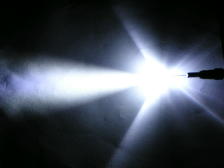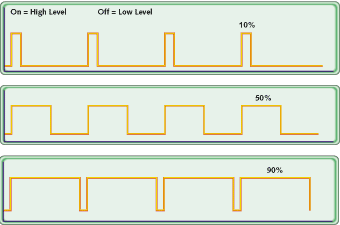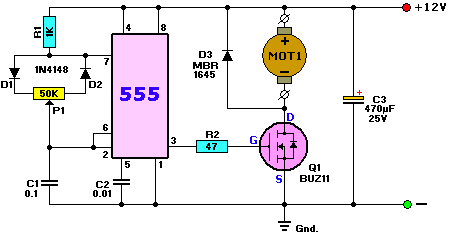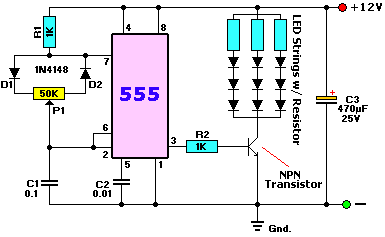
LEDs (light emitting diodes) are very sensitive components - exceed their rated current or voltage and their lifespan can be slashed from 50,000+ hours to a microsecond. LEDs are current-driven * which means that the intensity of the light they generate depends on the amount of electric current flowing them.
* The voltage drop across an LED depends entirely on the current flowing through it and ranges from 2-4 Volts for most LEDs.

Typically current is controlled using a resistance in series with the LED, or a current regulating circuit. Supplying more current to an LED increases its intensity, and reducing the current decreases its intensity. One way of dimming an LED is to use a variable resistors(potentiometer) to dynamically adjust the current getting to the LED and therefore increasing or decreasing its intensity. This works very well when just one LED bulb is involved.
Unfortunately, all LEDs are not made equal - even those of nominally identical specifications from the same batch from the same manufacturer. Although this will not be apparent when strings of LEDs are being driven with the recommended forward current (e.g. 25mA for ultrabright LEDs), as the current is reduced some LEDs will turn off before others, and some will be dim when others are still quite bright etc.
Pulse Width Modulation
A far superior method of dimming LEDs is to use Pulse Width Modulation (PWM). With PWM strings of LED bulbs can all be driven with the recommended forward current, with the dimming achieved by turning the LEDs on and off at high frequency - so fast the human eye cannot see the strobing effect. The longer the on periods are relative to the off periods, the brighter the LEDs will appear to the observer.
Duty Cycle is a percentage measure of the time that the LED is physically on. If, for example, the LED cycles ON for 9/1000 of a second, and then OFF for 1/1000 of a second, the duty cycle is 90%: 90% of the time it is ON, and 10% of the time it is OFF. Therefore, the intensity of the light will be approximately 90% of its undimmed level.
The easiest way to achieve this high frequency switching is to use a 555 timer integrated circuit (IC) - one of the commonest and most versatile ICs ever created. The circuit shown beloz is designed to be used as a dimmer for 12V DC light bulbs or a speed controller for a 12V DC motor.


In our test circuit, the resistors in the LED strings were chosen to provide a forward current of 25mA to the LEDs. With three equal strings, the total current was 75mA and so we chose a transistor (BC547) with an Ic rating of 200mA - better safe than sorry.
This dimmer circuit cannot be used to turn the LEDs all the way off or to full brightness. In fact it operates within a duty cycle range of 5%-95% as the potentiometer (labelled P1) is turned from minimum to maximum.
Using the Dimmer with MR16 LED Spotlights
The circuit described above be used with LED spot light . While individual LED bulbs are completely unharmed by being turned on and off rapidly, the internal circuitry of the spotlight unit does not appear to like it at all.We connected one of our 12V LED spotlights to the dimmer circuit and found that some of the 20 LEDs in the unit flashed on and off, others turned off altogether, and others alternated between being very bright and very dim.







0 comments:
Post a Comment